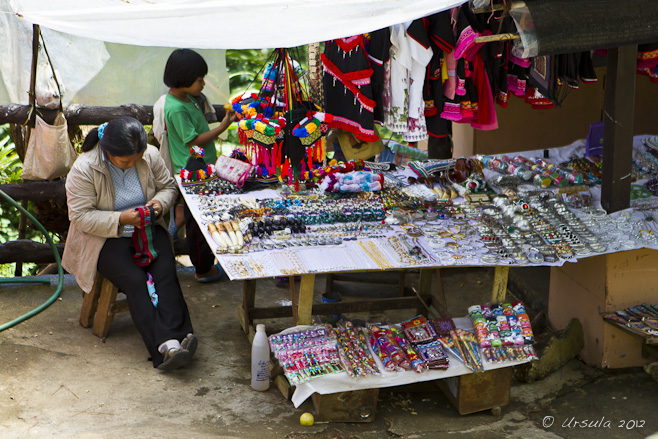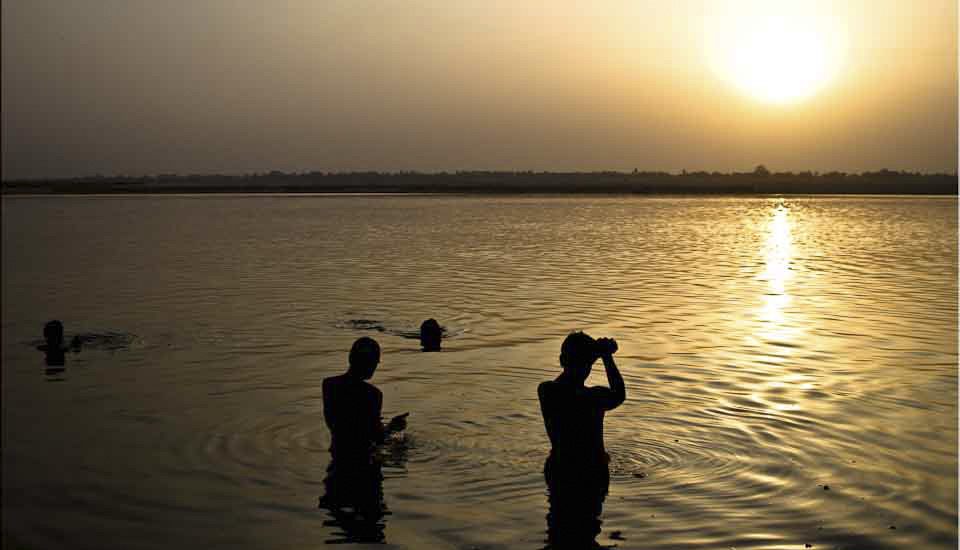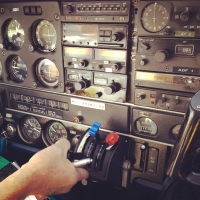
Water gateway to the two rivers and the three countries: Golden Triangle
“By the way, you DO have your passports with you, don’t you?” our guide asked (in Thai) after the van we were in had pulled away from our hotel. At least, that is what I finally figured out she had said – by which time we were already five or ten minutes down the highway. Negotiating meaning in another language is always a tricky business!
And, no – we didn’t have our passports. While I had read our itinerary, including the market stop in Mae Sai in the afternoon (…14.00 น. ตลาดท่าขี้เหล็กที่อ.แม่สาย…. ), I had missed the part (… ประเทศพม่า… ) where it mentioned Myanmar.
It was day two of our three day stay at De River Boutique Resort in the Golden Triangle, Chiang Rai. I was warned, when I bought our package deal at a travel expo in Bangkok, that they had only Thai-speaking guides. Our guide did, in fact, speak some English, and my Thai keeps us fed; most of the time we manage. But this exchange about the passports almost tripped us up completely: before setting off on our day’s tour, we had to return to our room to dig out our credentials.
The first markets we visited that day were local ones. After “making merit” with the horse-riding monks early in the morning and visiting the Royal Mae Fah Luang Gardens at Doi Tung, we stopped to browse the wares made and sold by the Akha hilltribe people. One of the larger ethnic groups in the region, the Akha are known for their crafts. They are also known for their slash-and-burn farming methods and for their cultivation and (traditionally) ritual use of opium. Consequently, there are numerous programs funded by local (Thai) royal projects and NGOs, as well as international NGOs, developed to foster the manufacture and sale of indigenous crafts, and to encourage more environmentally-friendly farming practices and replacement cash crops (especially coffee).
I’m always happy to do my bit by gift shopping for fabrics in these small markets. I do, however, draw the line at tiger teeth and snake whiskey!

Woman at work ~ Akha Market ~ Doi Tung, Thailand

Bags in the Sunshine ~ Akha Market Doi Tung

Woman at work ~ Akha Market ~ Doi Tung

Silver bracelets ~ Akha Market ~ Doi Tung

Tiger Teeth ~ Akha Market ~ Doi Tung
Thais love shopping.
The large street market in Tachileik, Myanmar, just across the Mae Sai River from Mae Sai, the northern-most point of Thailand, is particularly popular. Here Thais can get semi-illicit alcohol and cigarettes at prices far below those at home. Traditionally part of the opium trade routes, this area is still known for its distribution of “yaa baa” (methamphetamine) pills. We must have looked too conservative: we were offered no more than some pot and the usual cigarettes, pirate DVDs and “dirty” pictures.
This spot is also popular for non-Thais who need to exit the country temporarily for a “Visa Run” to extend their stay in Thailand. For us, the adventure was in the border crossing itself: the process of queuing, photocopying documents, queuing and paying, and queuing some more, took about an hour. Only then were we able to join the foot-, tuk-tuk-, car-, and bus-traffic across the river through no-man’s-land to the Burmese checkpoints and into the crowded markets below.

Crossing the Burmese border from Mae Sai to Tachileik.

Street Market, Tachileik , Myanmar

Burmese Buddhas for sale, Tachileik.

Tachileik Temple Buddha

From Money to Offerings: Buddhist Temple, Tachileik

Drink Seller: Tachileik Market (Notice the thanaka paste on her face.)

Thanaka wood for grinding into the paste or cream commonly worn in Myanmar and parts of Thailand.

Tees for Sale: Tachileik Market, Myanmar

Tuk-tuks head back to Thailand with as much as they can carry!
The next morning we were met at the boat landing behind our hotel for a trip up and down the Mekong and a stop at another local market – this time in Laos.
The market was quiet: Thailand and Laos were (and still are) giving each other the diplomatic cold-shoulder over the killing, a week or two before, of 13 Chinese sailors. The sailors were on two cargo boats laden with drugs, travelling the short distance from China down the Mekong between Myanmar, Thailand and Laos. The Shan State, over the river from Thailand in Myanmar, with its drug-financed ethnic warlords and heavy Chinese influence, continues to trade in opium, people, rubies, teak and firearms, and the whole area – traditionally known for the production and distribution of opium – still has a well-deserved reputation for lawlessness. According to one report, the Chinese sailors were killed before the boats reached Thai waters: a heavily-armed pirate in Burmese waters was held responsible for their execution. The story we saw when we were there was that nine men, members of the Thai military but acting “unofficially”, had been arrested for the murders. According to a recent Reuters report (January 27, 2012), no arrests were ever made and the situation remains muddy.
Either way, the Chinese were very unhappy with the Thais. Laos, which is politically and financially affiliated with China – to the extent of having Chinese casinos and a Chinese economic free-trade zone in the immediate area – was suffering from the Thai boycott of market trade. We had the Donsao market to ourselves. The packed-dirt ground and the threat of rain added to the feel of quiet desolation.

Welcome to Donsao, Laos

Bone Pipes and Pots

The happy pipe seller: punctuate that any way you like!

Scorpion and cobra whiskey: for medicinal purposes... I'm not sure what ailments warrant this "cure".

Cobra taste-testing?

Buddha heads and banyan trees for sale.

Souvenir Laos Dolls

A captive sun bear sits in a small cage behind the markets.

Boats on the muddy Mekong
Markets are always a pleasure to visit, and provide an interesting insight into people’s priorities and lives. I love the noise and colours and textures.
I’m less fond of finding bears in cages…
I trust you stay well – lest we have to treat you with snake whiskey. Cheers!
Pictures: October 30-31, 2011


























.png)


WOW…was thoroughly enjoying the trips you take, right up to the sun bear. What an amazing country of colour and vibrancy however the idea of snake whiskey and tigers teeth elude me. I guess its easy sitting here making judgements but the reality is so very different. Thank you for taking me along with you.
It’s a tough one, isn’t it, Signe?
Always happy to have your company! 🙂
Thank you for allowing me to share your wonderful adventure!
The Money to Offerings are a true work of art.
The caged bear is saddening and the snake whisky sounds different but could I sample it – I don’t know.
What a rich life you lead!
Kind regards
Anna :o]
Hi Anna :o],
It is always a pleasure to have your visits. I have drunk the local whiskey (in VERY small amounts!), but I avoid the bottles with creatures in them. 😀
Mit dieser Serie hast Du wieder eine grosse Erkennungsreise bei mir wachgemacht. Ich habe nachgesehen, es ist 10 Jahre her dass ich dort in Thailand/Myanmar war. Schön wenn ich nun durch Deine Foto’s die Reise erneut aufleben lassen kann. Herzliche Grüsse, Dietmut
Danke, Dietmut!
[…] villages, the beautiful countryside… I’m less fond of the border markets like those I talked about last week, with their cheap Chinese electricals, clothing, and leather-goods, and their bears in cages, […]
Interesting. Thanks, Ursula.
Patrick
Thanks for your visit, Patrick.
[…] Bangkok) or money: shaped into trees (e.g. Morning Markets ~ Attapeu, Laos) or butterflies (e.g. Three Markets ~ Three Countries (Thailand, Myanmar, Laos: Golden Triangle)) – and you can usually find plenty of local meat and produce (e.g. Another Morning Market ~ […]